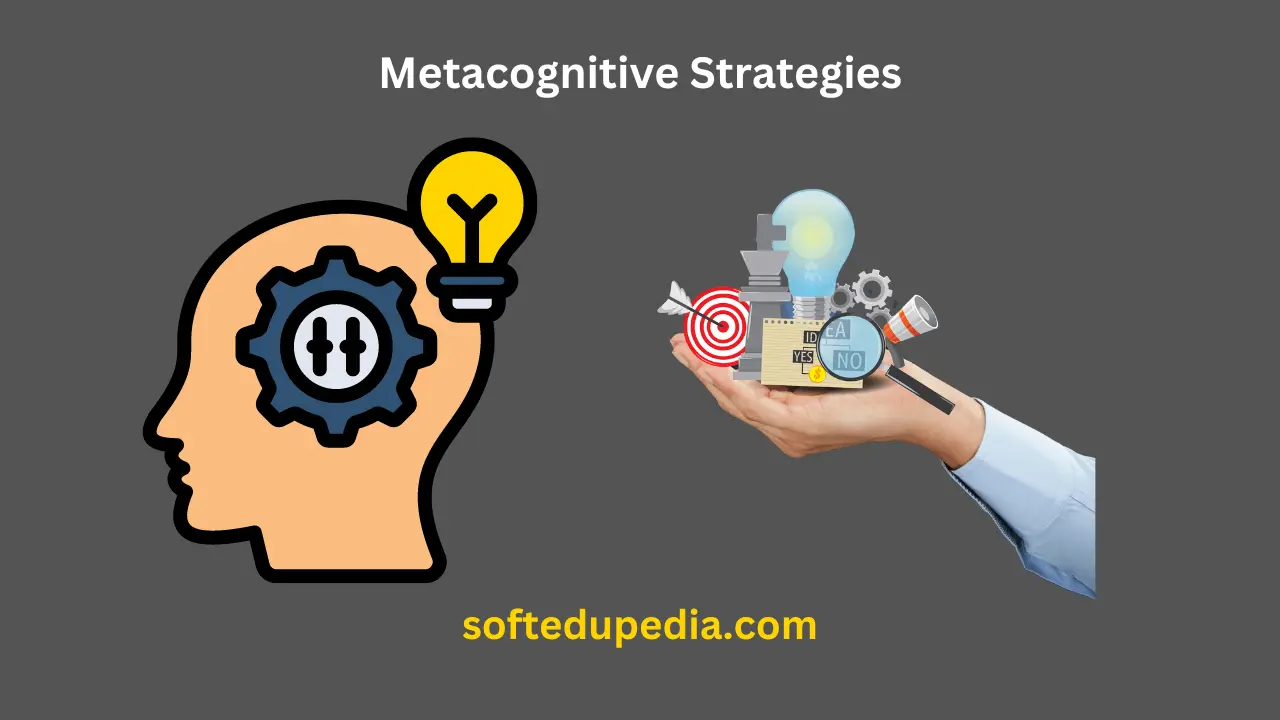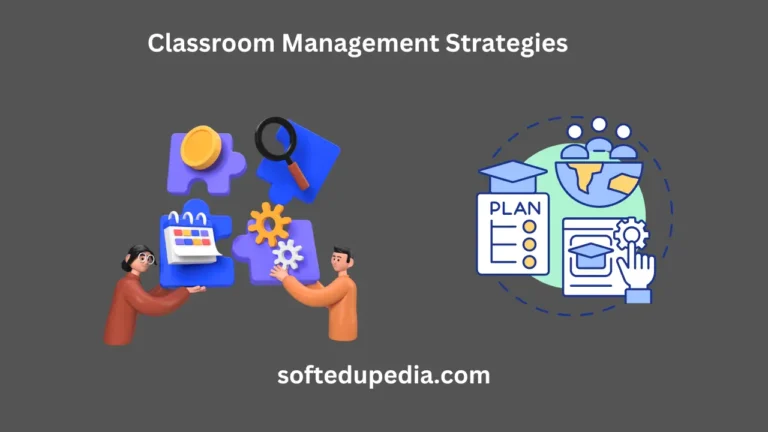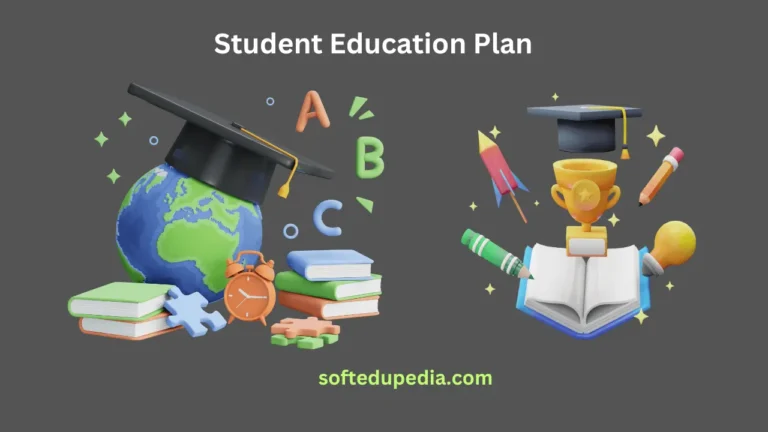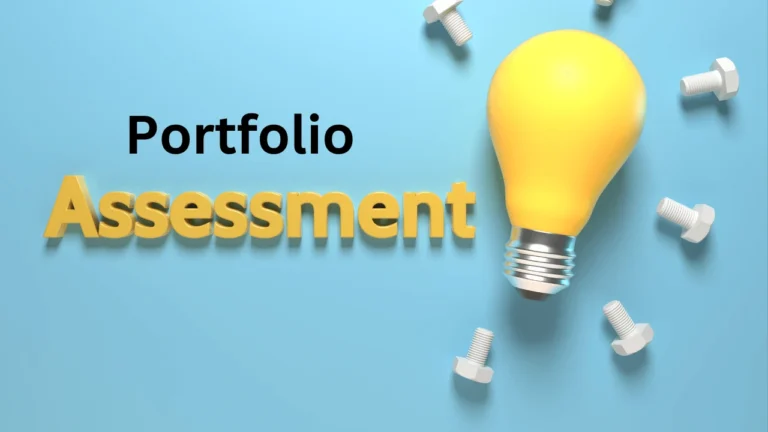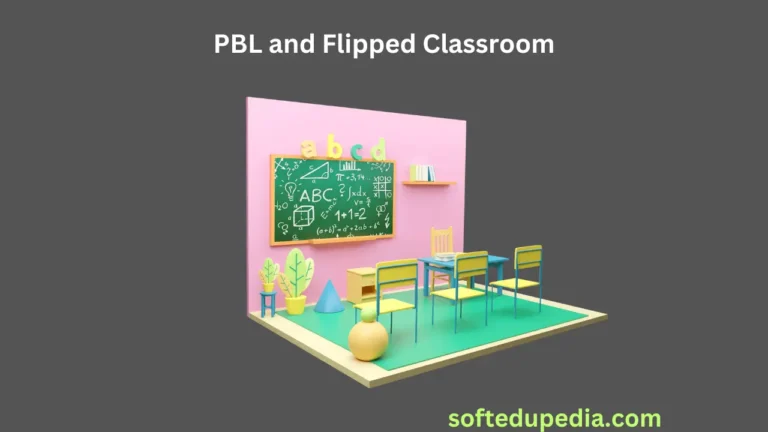Top Metacognitive Strategies for Effective Learning
Techniques known as meta-active strategies enable people to comprehend, regulate, and control their cognitive processes. These techniques call for organizing how one approaches a learning assignment, tracking understanding and development, and assessing the results of the educational process. Metacognition is basically “thinking about thinking”—an ability that helps students to become more conscious of their strengths and shortcomings and to modify their approaches for more successful learning.
One cannot overestimate the value of metacognition in education. Students who acquire metacognitive abilities will improve their capacity for critical thinking, problem-solving, and academic performance. Greater independence, confidence, and resilience follow from learners’ ability to take charge of their learning through metacognition. It changes how students interact with materials so that they may approach problems deliberately and thoughtfully instead of only responding to them.
We shall investigate several facets of metacognitive methods in this blog, including how they could help to improve reading comprehension, and study habits, and create reasonable learning objectives. Then We will also explore how teachers could apply metacognitive tactics in the classroom, providing doable advice and engaging exercises for their students. We will also stress methods and resources available to help one build metacognitive abilities. By the time this book ends, you will have a thorough awareness of how metacognition could be included in education to support more deliberate and self-directed students.
What Are Metacognitive Strategies?
Metacognitive strategies are those tools used to assist people in understanding, tracking, and regulating their cognitive functions. These techniques help one to consider their thinking, which is quite helpful for learning and problem-solving. Self-awareness regarding one’s strengths and shortcomings, goal-setting, planning, tracking development, and analysis of the results are part of meta-awareness. It’s really about realizing how you learn, which will enable you to study more successfully.
The role of metacognition in self-regulated learning
Since it enables students to take charge of their learning processes, metacognition plays a major role in education. Learners interact actively with the content, ask questions, and modify their approach depending on what works and what doesn’t rather than merely absorb knowledge passively. Deeper knowledge and improved memory of material follow from this self-regulated learning strategy.
Benefits of using metacognitive strategies
The fact that metacognitive techniques may be used in many spheres of learning and living makes them among the main advantages. Metacognitive techniques can improve your capacity to learn whether your goals are test preparation, comprehension of a difficult idea, or acquisition of a new ability. Regularly considering your learning experiences and results can help you to keep improving your method and get greater results.
Furthermore, metacognitive techniques can assist to control anxiety and tension connected to learning. Learners will feel less overwhelmed and more in control if they divide chores into doable steps, create reasonable goals, and track development. This therefore increases drive and endurance. For everyone trying to improve their learning and cognitive abilities, knowledge of and application of metacognitive tactics is crucial.
Effective Metacognitive Strategies for Learning
Good metacognitive strategies are crucial instruments for greatly improving the learning process. They enable students to approach information acquisition with more strategic, introspective, and self-aware attitude. Here is a thorough review of some of the most successful metacognitive techniques together with ideas for using them in regular classroom instruction.
Overview of Essential Strategies
Three core metacognitive strategies are widely recognized for their effectiveness in enhancing learning:
- Planning: This entails developing a plan of action to reach well defined, particular objectives. Before beginning a project, planning enables students to arrange their ideas and activities, therefore enhancing their efficiency and concentration. Before starting a difficult project, for example, students might draft an overview, set a schedule, and list the main tools they will require.
- Monitoring: This approach entails routinely evaluating one’s own knowledge and development during the educational process. Monitoring lets students keep on target and make necessary real-time corrections. Among the strategies include self-quizzing, posing introspective questions such “Do I understand this concept?” and tracking development with checklists.
- Evaluating: This last approach emphasizes on considering the success of the learning process following a task completion. Evaluation lets students know what worked and what didn’t as well as how they may grow going forward. Examining performance, getting comments, and thinking about what changes can improve future learning help one to do this.
How to Apply These Strategies in Everyday Learning
Applying metacognitive strategies in everyday learning involves integrating these techniques into regular study routines and tasks:
- Planning: Formulate clear objectives for what you hope to accomplish before beginning a study session. For a test, for instance, choose which chapters or subjects you will review and schedule time appropriately. Plan your studies with pauses to prevent fatigue and guarantee your concentration.
- Monitoring: Periodically evaluate your understanding throughout study by describing what you have discovered or clarifying it for someone else. Use practice exams to evaluate your knowledge and change your study strategies should you discover that some areas require more focus. Keep a close eye on indicators of uncertainty and get an explanation right away.
- Evaluating: Think back on what worked and what didn’t following a study session or project. Think about maintaining a learning notebook in which you might jot notes on every study session. Inquire of yourself things like “What study strategies were most effective?” and “How can I improve my approach next time?”
Examples of Effective Metacognitive Practices
Here are some practical examples of how to implement metacognitive strategies:
- Self-Questioning: Urge students to probe themselves both before, during, and after their studies. For example, “What do I already know about this topic?” you would ask before reading a textbook chapter. As you read, ask questions like, “What is the main idea of this section?” and following reading, consider questions like, “How does this material relate to what I’ve learned before?”
- Think-Alouds: Using this method, you vocalize your mental process as you go through a job or difficulty. As you go through a math issue, for instance, clearly state your thinking. This exercise might help you expose any comprehension gaps and straighten your mental process.
- Reflective Journaling: Keep a notebook in which you document your learning objectives, tactics applied, development achieved, and thoughts on what worked or did not. This exercise lets you monitor your development and offers an understanding of how you may modify your plans to produce better results.
Including these metacognitive techniques into regular education helps people to create more efficient and customized approaches to their education, therefore enhancing knowledge, retention, and academic success.
Enhancing Reading Comprehension with Metacognition
One of the basic abilities that greatly affects academic performance and lifetime learning is reading comprehension. By enabling readers to actively interact with the text, track their comprehension, and make required changes, metacognition—that is, thinking about one’s own thinking—plays a critical part in improving reading comprehension. Here are some useful advice for properly implementing metacognitive techniques and how they could help to increase reading comprehension.
Understanding the Connection Between Reading and Metacognition
In reading, metacognition is the awareness of and control of one’s cognitive processes. This covers organizing how to approach a reading assignment, tracking comprehension as one reads, and assessing knowledge afterward. Reading and metacognition are related in that the reader’s capacity to actively control their cognitive processes will increase understanding.
Readers who apply metacognitive techniques interact more with the book. Before reading, for example, individuals could create expectations or set goals for the material. They track their comprehension and modify their reading techniques as required throughout reading. Following reading, students consider their knowledge and degree of comprehension of the content. This proactive involvement aids in knowledge retention and deepening of understanding.
Readers with metacognitive awareness will be able to identify when they have misinterpreted or confused portions of the book. This knowledge results in the use of several approaches to handle these problems, including rereading, clarifying the material, or text summarizing. Generally, metacognitive techniques improve the reader’s capacity to connect meaningfully with the material, therefore improving comprehension and learning results.
Techniques for Improving Reading Comprehension
Several metacognitive techniques can be employed to improve reading comprehension:
- Previewing the Text:
View the book to gain a sense of its major themes and organization before starting it. Check headers, subheads, and any opening or closing paragraphs. This clarifies expectations and guides one toward important ideas.
- Making Predictions:
Based on the title, headers, or images, guess what you could learn by reading a section. This motivates you to read and stimulates your brain to actively hunt out data supporting or negating your hypotheses.
- Self-Monitoring:
As you read, always be sure you grasp anything. Inquire of yourself things like “Do I understand what I just read?” or “How does this information fit with what I already know?” If you find yourself perplexed, stop and reread the section or deduce meaning from context cues.
- Summarizing and Paraphrasing:
Stop often to rephrase vernacularly sum up what you have read. This method guarantees that you are remembering important facts and helps to clarify concepts.
- Highlighting and Annotating:
Mark significant passages or make notes in the margins using highlighting or annotation instruments. This enables you to arrange your ideas and simplify later evaluation of important aspects.
- Reflecting on the Reading:
Spend some time considering what you have learnt following a reading. Think through questions like, “What were the primary ideas?” then “How does this information relate to what I already know?” This introspection allows you to combine fresh knowledge with your existing understanding.
Practical Tips for Applying Metacognitive Strategies While Reading
To effectively apply metacognitive strategies while reading, consider the following practical tips:
Set Clear Goals:
Set particular objectives for your reading time. Choose what you want to accomplish—such as grasping a given idea or chapter summary. Clear objectives enable you to concentrate your reading and give it greater meaning.
Use Metacognitive Prompts:
Use questions to help you consider how you read. For instance, find yourself wondering, “What is the main idea of this paragraph?” or “How does this section relate to prior material?”
Create a Reading Log:
Record your ideas, summaries, and textual queries in a reading notebook. Reviewing your understanding and charting your development over time will find great benefits from this journal.
Practice Regularly:
Plan frequent reading activities with metacognitive methods in mind. These methods will become more natural and more successful in enhancing your knowledge the more you use them.
Seek Feedback:
Talk about your reading and comprehension to study groups, professors, or classmates. Sharing your ideas and getting comments might help you to understand things from fresh angles.
These metacognitive techniques can help you improve your capacity to grasp and remember material, thereby optimizing your reading experiences. In addition to enhancing reading comprehension, metacognition helps one approach learning more deeply and deliberately.
Metacognitive Strategies for Test-Taking Success
Many students find test-taking to be a stressful experience with challenges including exam anxiety, inadequate time management, and memory problems. But using metacognitive strategies can help anxiety be substantially reduced and exam performance be significantly improved. By means of better knowledge of their own cognitive processes, students might develop effective plans for exam preparation and implementation, therefore enhancing the outcomes.
Common Challenges in Test-Taking
Test-taking presents several common challenges that can impact performance:
- Test Anxiety: Many students’s capacity for attention and recollection of content suffers from anxiety both before and during tests. Negative thoughts, physical problems, and an overall performance drop can all result from anxiety.
- Time Management: Effective exam timing is crucial. Many times, students fail to give each question or section enough time, which leads to rushed answers and incomplete responses.
- Recall Difficulties: Under pressure, recalling knowledge can be challenging, especially in circumstances where students have not thoroughly gone over or organized their study materials. Inappropriate methods of research or ignorance of the material might cause bad recall.
- Misinterpretation of Questions: It is quite important to correctly understand and read test questions. Students who misunderstand or misinterpret questions might respond incorrectly although knowing the material.
How Metacognitive Strategies Can Reduce Test Anxiety
Metacognitive strategies can help mitigate test anxiety and improve overall performance:
- Pre-Test Planning: Good preparation before the test might help to reduce anxiety. Students should create a study calendar with pauses to prevent fatigue and cover all pertinent information. Reducing uncertainty also depends on developing a test-taking plan including time for every part and deciding which sequence to approach questions.
- Self-Monitoring: Self-monitoring strategies can assist in controlling anxiety during the test. Students should keep conscious of their emotional condition, routinely review their development, make sure they are following their time management strategy, and so guarantee they are Using relaxation methods or a few deep breaths will help you refocus should your anxiety increase.
- Reflective Practice: Examining performance after the test might help one understand how anxiety was controlled and where work has to be done. Examining which techniques worked and which did not will enable pupils to modify their approach for the next assessments.
Step-by-Step Guide to Using Metacognition for Better Test Performance
- Set Clear Goals and Develop a Study Plan:
Clearly state your objectives for what has to be done before beginning study sessions. Make a thorough study schedule with all the subjects to be addressed, study tools, and a finish date. This schedule must to provide time for practice tests and review sessions.
- Employ Active Learning Techniques:
Create mind maps, summarize content in your own words, or teach the topic to someone else using active learning strategies. During the test, these techniques assist to clarify knowledge and ease memory recall.
- Practice Self-Questioning:
Ask yourself routinely throughout study sessions questions regarding the content to gauge your knowledge. Ask, for instance, “What are the key ideas in this chapter?” then “How do these ideas relate to what I learned previously?” This exercise aids in the identification of regions requiring additional inspection for weakness.
- Implement Time Management Strategies:
Spend your test time based on the point value and complexity of every question. Start with the questions you find most simple to boost confidence and make sure you have time for more difficult ones. Track time with a watch or timer; change your speed as necessary.
- Reflect and Adjust:
Review your test performance and consider which techniques worked and which did not. Think about keeping a test notebook in which you record your test-taking techniques, study plans, and exam-related thoughts. This knowledge can help you modify your strategy for the next assessments, concentrating on areas needing development.
Students may improve their test-taking skills, lower their anxiety, and get higher results by including these metacognitive techniques in test preparation and execution. Knowing and using these strategies not only helps students be ready for certain assessments but also gives them useful abilities for lifetime learning and problem-solving.
Teaching Students to Set Effective Learning Goals
A basic component of both personal development and academic achievement is defining reasonable learning objectives. Objectives provide pupils direction, drive, and a clear sense of purpose so they may concentrate their efforts and track their development. Including metacognitive techniques into goal-setting will enable teachers to assist their students create more realistic, successful objectives that improve their learning opportunities and results.
The Importance of Goal-Setting in Learning
The learning process depends much on goal-setting as it gives pupils a clear road map for their intended outcomes. Objectives support students:
- Focus Attention: Well-defined goals help pupils focus on certain activities and objectives, therefore facilitating their concentration on what has to be done.
- Increase Motivation: By giving one a feeling of direction and a concrete target to aim toward, goals may increase drive. Well-defined goals help students to remain involved and dedicated to their education.
- Enhance Self-Regulation: Establishing objectives motivates students to track their development, consider their performance, and make required changes. This self-regulation process enhances students’ capacity to control problems and allows them to become more in charge of their education.
- Measure Progress: Objectives offer a standard by which to measure development and accomplishment. Regular goal and achievement reviews help students to monitor their development and honor their successes.
- Build Confidence: Establishing clear objectives helps kids to feel successful and increases their confidence in their capacity. This positive reinforcement motivates pupils to create and work toward fresh objectives.
Good goal-setting helps students to take control of their education, therefore promoting a proactive and self-directed attitude to learning. Teachers may help their students’ general intellectual and personal growth by guiding them toward and accomplishing significant goals.
How Metacognitive Strategies Can Guide Goal-Setting
Effective goal-setting is greatly guided by metacognitive methods, which enable students to examine critically their learning objectives and the means of achieving them. Here’s how metacognitive tactics could improve goal-setting:
- Self-Assessment: Students can utilize self-assessment tools to examine their present strengths, shortcomings, and development opportunities before developing objectives. Based on their particular requirements and abilities, this reflection guides students in developing reasonable and pertinent objectives.
- Planning and Strategy Selection: Using metacognitive methods means organizing how you approach a project. These techniques let students list particular actions and approaches for reaching their objectives. They could divide a more ambitious objective into smaller, doable chores and choose the tools or strategies required to complete each one.
- Monitoring Progress: Students can use metacognitive techniques to track their development in the course of pursuing their objectives. They may evaluate their performance, routinely see whether they are on track, and make any changes. Constant self-monitoring helps pupils remain focused and change their strategy to go over challenges.
- Reflecting on Outcomes: Following a goal, students can consider their experience to assess what went right and what might be strengthened. Through this introspection, students may better grasp their learning process and use their findings for the next objective-setting.
Including metacognitive techniques in the goal-setting process helps students to better grasp their learning objectives and improve their capacity for successful attainment.
Tips for Educators: Teaching Students to Set SMART Goals
Students’ goal-setting efficacy can be much enhanced by instruction in SMART goals—specific, measurable, achievable, relevant, and time-bound. Here are some doable suggestions for teachers:
Specific:
Motivational students should inspire others to create certain, well-defined goals. An objective should be thorough and well-defined, precisely addressing the student’s desired outcome. For instance, rather than a nebulous objective like “improve writing skills,” a clear one might be “write and edit three essays on different topics by the end of the month.”
Measurable:
Objectives should comprise standards for gauging development and success. Help students create quantifiable goals such as “increase quiz scores by 10% over the next two weeks” or “complete five practice problems daily.” This lets pupils keep engaged and monitor their development.
Achievable:
Make sure that considering the student’s present skills and resources, objectives are reasonable and reachable. Given the student’s degree of ability and free time, goals should be demanding yet reasonable. Setting a goal to “read and summarize two chapters per week” would be more realistic than trying to “read an entire book in one week.”
Relevant:
Objectives of learning and the personal interests of the learner should guide the goals. Support students in spotting objectives that complement their academic and personal ambitions. For a student interested in science, for instance, “conduct a science experiment and present the findings to the class” would be a relevant aim.
Time-bound:
Objectives should have an obvious completion date or time limit. Motivational pupils should be encouraged to establish timelines for reaching their objectives thereby instilling responsibility and urgency. A time-bound aim would be to “complete and submit the final draft of the research paper by the end of the semester.”
Educators may help students create successful, reasonable goals that improve their learning experiences and support academic achievement by training them to construct SMART goals and including metacognitive tools into the goal-setting process.
Using Metacognition to Improve Study Habits
Using metacognitive techniques, and enhancing study habits might change students’ attitudes to their education. Through awareness of their study habits and identification of which strategies best fit them, metacognition enables students to This knowledge helps people to deliberately modify their study habits, therefore improving the effectiveness of their learning sessions.
Encouragement of students to consider their present practices marks one of the initial stages in applying metacognition to enhance study habits. They could begin by asking themselves things like “When do I study best?” “What study techniques help me retain information?” and “What distractions most annoy me?” This self-evaluation can point out areas needing work as well as strengths.
This reflection helps students to create particular objectives for each of their study sessions. If they find, for instance, that they are most concentrated in the early morning, they might schedule to address difficult material at that time. Should they discover that their phone readily diverts them, they might design a study space that reduces interruptions. These intentional changes will help students develop a more efficient study schedule fit for their particular requirements and learning styles.
Another crucial metacognitive tactic for bettering study habits is tracking development. Students should routinely evaluate the effectiveness of their study habits and be ready to modify their approaches when needed. If a certain study strategy isn’t working for you, for instance, you should be willing to attempt active recall, spaced repetition, or mind mapping. Students who always assess and improve their study techniques can create a customized method that best uses their learning capacity.
Self-Questioning: A Powerful Metacognitive Tool
A great metacognitive method that helps students to actively interact with content is self-questing, therefore improving knowledge and retention. Under this approach, students ask questions of themselves during instruction to help them comprehend, forecast results, and consider the content. Self-questioning helps students become more conscious of their mental processes and find knowledge gaps, thereby facilitating the treatment of such areas.
Self-questioning’s main advantage is that it keeps the student actively engaged instead of only absorbing knowledge passively. Before beginning a reading assignment, for example, students can inquire, “What do I already know about this topic?” They might challenge themselves regarding the material when reading, such as “What is the main idea here?” or “How does this information connect to what I learned before?” Following reading, students could consider questions such as “What did I learn from this?” or “What questions do I still have?”
This approach sharpens critical thinking ability in addition to deepening knowledge. Constant evaluation of their knowledge helps students to create links between new material and past knowledge, therefore improving their whole learning. It also encourages curiosity and active participation with the material, therefore transforming learning into a more dynamic and participatory process.
Including self-questioning in several learning environments is simple and may be modified for many disciplines and grade levels. Self-questioning may be a flexible strategy to assist students grow a more critical and introspective attitude to learning whether they are employed while reading, studying, or problem-solving.
Developing Critical Thinking through Metacognition
Success in both academic and practical environments depends on developing critical thinking abilities; metacognition is therefore rather important in this process. Through awareness of their cognitive processes, metacognitive tactics enable students to approach critical thinking assignments more successfully. Critical thinking is the analysis, evaluation, and synthesis of information processes.
By helping students to examine their ideas, metacognition improves critical thinking. For a difficult problem, for instance, a student may utilize metacognitive techniques to organize their approach, track their development, and assess the success of their answer. “What is my goal in solving this problem?” they can ask themselves. “What strategies am I using, and are they working?” and “How might I improve my approach next time?”
Regular use of this reflective exercise helps students to improve in spotting prejudices, challenging presumptions, and weighing other points of view. This increased awareness not only helps them to evaluate material but also encourages a more flexible and open attitude to solve problems.
By use of metacognition, practical activities such as think-alouds, debates, and reflective journaling assist students in acquiring critical thinking abilities. Through clear communication of their mental processes, students may better see areas needing development and grasp their reasoning. This approach helps students develop better critical thinking abilities over time so they may negotiate difficult circumstances with more confidence and insight.
How to Implement Metacognitive Strategies in the Classroom
Using metacognitive strategies in the classroom can help students to have far better learning experiences and results. Teachers may enable their pupils to grow into more self-awareness, self-regulated, autonomous learners by including these techniques. Teaching students what to learn is only one aspect of metacognitive methods; they also teach how to learn, think critically, and consider their knowledge. Teachers can include metacognition into their curricula, develop activities encouraging self-reflection, and make use of several tools and resources meant to raise metacognitive awareness to properly use these tactics.
Establishing a classroom where critical thought and reflection are encouraged is essential for effective application. By regularly including metacognitive cues in daily activities—such as encouraging students to forecast results, consider their learning strategies, or assess the success of their study techniques—you may help them to develop Encouragement students to create learning objectives, arrange their approach to tasks, track their development, and consider their achievements and areas for development helps to build a metacognition culture.
Giving students chances to apply these abilities via group projects, debates, and peer comments will also help them to develop metacognitively. When students explain their thought processes, not only does it help them personally but it offers insightful analysis for their classmates. Teachers may help students develop the abilities they need to be lifetime learners ready to meet difficulties both inside and outside the classroom by including metacognitive tactics in the daily classroom schedule.
Tips for Educators on Integrating Metacognition into Lesson Plans
Including metacognition in the course of instruction calls for a careful method to guarantee that students are regularly using strategic and reflective thinking. Starting every class with a defined aim and urging students to create personal objectives connected to that target is one good advise. This gives pupils’ learning activities meaning and helps them concentrate their efforts. By using metacognitive questions like “What do you already know about this topic?” or “What strategies will you use to complete this task?” students might be guided to consider their learning process before entering the classroom.
Including check-ins throughout the course helps students to keep an eye on their knowledge. Reflective writing, think-pair-share exercises, or fast formative evaluations can all help with this. Asking students questions like “Am I understanding this concept?” or “Do I need to change my approach?” keeps them involved and lets them instantly modify their plans.
At last, wrap off each class with a reflection period where students may assess their knowledge, learning style, and areas for development for the following time. Discussions, written comments, or exit tickets asking questions like “What was the most challenging part of today’s lesson?” or “What will you do differently next time?” might help this along. Regular inclusion of these components in the course of instruction helps teachers create a classroom environment in which metacognitive thinking is a natural component of the learning process.
Activities and Exercises to Promote Metacognitive Awareness
Through focused tasks and exercises fostering self-reflection and strategic thinking, pupils may be successfully raised in metacognitive awareness. The “Think Aloud” exercise—where pupils vocalize their mental processes while they work on a problem or finish a task—is one easy yet effective practice. This exercise not only raises students’ awareness of their cognitive processes but also gives teachers an understanding of their students’ thinking patterns, therefore enabling better-customized coaching and feedback.
“Self-questioning,” in which students create their questions about the subject matter they are studying, is another great workout. One can accomplish this alone or in groups and include areas such as outcome prediction, clarification of unclear topics, or evaluation of the relevance of the material. Through developing and responding to their questions, students actively interact with the material and hone their critical thinking skills.
Promoting metacognitive awareness also depends much on journaling. Encouragement of students to keep a learning diary whereby they routinely consider their objectives, study techniques, and development will enable them to monitor their educational path throughout time. Students are guided in closely examining their learning experiences by prompts such as “What strategy worked well for you today?” or “What did you find challenging, and how did you address it?” These exercises not only improve metacognitive abilities but also enable students to take responsibility for their education, therefore increasing their resilience and adaptability as learners.
Tools and Resources for Teachers and Students
Many tools and materials are at hand to help teachers apply metacognitive approaches in the classroom. Features of digital tools include Google Classroom, Edmodo, and Microsoft Teams can support metacognitive tasks including reflective writing, goal setting, and feedback sharing. These instruments help to establish an interactive and cooperative learning environment whereby students may apply metacognitive techniques both inside and outside of the classroom.
Key components of metacognition, self-assessment, and reflection give students chances via educational apps like Quizlet, Kahoot, and Nearpod. These tools let students evaluate their knowledge of a certain topic, pinpoint places they require additional research, and consider their performance, therefore enabling them to create over time more successful study plans.
Professional development materials such as webinars, online courses, and instructional guides on metacognition may give teachers insightful analysis and useful advice on how to successfully implement these techniques. Websites include Edutopia, MindShift, and the Teaching Channel provide a variety of materials especially targeted on metacognitive teaching strategies together with articles and videos. Teachers may improve their education and help their students to become metacognitively aware learners by using these instruments and resources.
Conclusion
A transforming method that helps students become more self-aware, thoughtful, and successful learners is including metacognitive tactics in their education. From boosting reading comprehension and study habits to creating learning goals and honing critical thinking abilities, we have discussed a range of metacognitive techniques throughout this book. Understanding and using these techniques can help students take more control over their learning process, therefore enhancing their academic achievement and increasing their confidence in their talents.
Encouragement of metacognitive abilities in their pupils depends critically on teachers. Teachers may construct a classroom that supports self-regulation and autonomous learning by including metacognitive methods into their lesson plans, pushing reflective activities, and using supporting tools and resources. Beyond the classroom, these initiatives empower children with the tools they need to negotiate obstacles and thrive in all spheres of life.
Teachers, students, and parents are urged as a call to action to begin including metacognitive techniques into their regular schedules. Start with little steps—such as establishing specific learning objectives or practicing consistent self-reflection—then progressively move toward a more complete metacognitive approach. This will not only increase learning results but also help you to develop a constant attitude of improvement. Try these techniques in your classroom or classroom and see how metacognition improves your educational process.
